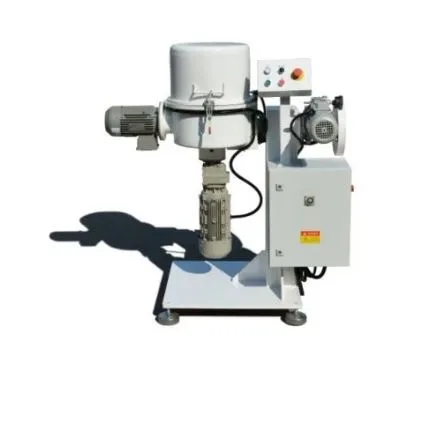Assisted Living & Elderly Care: Elevating Life for Seniors
Deciding on the right care options for an aging loved one is one of the most significant decisions families face. The balance between providing support, maintaining dignity, and fostering a thriving lifestyle can feel overwhelming. Assisted living plays a crucial role in bridging that gap, offering personalized care that lets seniors maintain their independence while receiving support for their daily needs.
But what exactly is assisted living? How is it different from memory care, and how do you choose the right option? This blog dives beyond the basics of elderly care, explores the nuances of these care options, and outlines how you can create a safe, fulfilling environment for your loved one.
What Does Assisted Living Mean for Seniors?
At its core, assisted living is designed for seniors who need help with everyday activities but do not require the constant medical supervision found in nursing homes. It provides a balance between independence and support, allowing seniors to thrive in a residential setting while getting assistance for tasks they can no longer manage independently.
Key Features of Assisted Living
- Help with Daily Living: Assistance with bathing, dressing, medication management, and other daily tasks.
- Residential Comfort: Private or shared living spaces combined with communal areas for dining, recreation, and socializing.
- Social and Recreational Activities: Programs and events designed to nurture mental stimulation, physical well-being, and connections between residents.
The goal is to empower seniors to live vibrant, active lives while ensuring their safety and comfort.
Why Holistic Elderly Care is a Game-Changer
Assisted living provides a strong foundation of care, but adopting a holistic approach elevates elderly care to an entirely new level. Holistic elderly care goes beyond the basics, addressing mental, emotional, and social health alongside physical needs.
Memory Care Matters
Memory care is a specialized form of assisted living designed to support individuals with Alzheimer’s, dementia, and other cognitive impairments. This type of care focuses on creating routines, providing emotional support, and offering tailored therapy to improve quality of life.
Here’s how memory care stands out:
- Specialized Environments: Memory care facilities are often equipped with design elements like color-coded hallways and memory-focused décor to reduce confusion.
- Cognitive Therapy: Programs such as music therapy and brain games help residents retain mental abilities and engage actively.
- Highly Trained Staff: Care teams are specifically trained to manage the unique challenges associated with cognitive decline.
By combining traditional assisted living with memory care where appropriate, families can ensure their loved ones stay safe, engaged, and fulfilled.
Assisted Living or Memory Care? Knowing the Difference
Assisted living and memory care both serve essential yet distinct roles. While assisted living focuses on enabling independence, memory care prioritizes cognitive health and safety for those with memory challenges.
Key Differences to Consider:
- Environment Design
- Assisted living mimics residential-style living, promoting independence and social interaction.
- Memory care includes safety measures like secured areas, circular layouts, and signage to reduce confusion or wandering.
- Activity Types
- Assisted living offers general recreational activities like yoga or book clubs.
- Memory care focuses on therapeutic activities like reminiscence therapy or sensory stimulation.
- Level of Support
- Assisted living staff help with daily tasks like cooking or mobility.
- Memory care requires specialized training, enabling teams to support behavioral changes and cognitive conditions.
By evaluating the needs of your loved one, you can decide whether assisted living or memory care provides the most suitable balance of support and enrichment.
How Assisted Living and Memory Care Intersect
Many assisted living facilities now integrate memory care units or offer seamless transitions as residents’ needs evolve. This flexibility allows families to avoid the disruptions of relocation while ensuring the care provided adapts to changing requirements.
Benefits of Combined Services
- Continuity of Care: Residents can seamlessly transition from assisted living to memory care if their condition evolves.
- All-In-One Community: Families benefit from a single point of care, reducing stress and ensuring consistent quality.
- Peace of Mind: Knowing that future needs will be met under one roof ensures long-term security for both residents and families.
This thoughtful integration elevates the overall experience for seniors by fostering stability, comfort, and care.
Choosing the Best Care Option for Your Loved One
Selecting the ideal living arrangement for a senior loved one takes careful consideration. Here are the steps to guide you:
1. Identify Specific Needs
Evaluate the current and potential future care requirements of your loved one. Do they primarily need assistance with daily living, or are there signs of cognitive decline?
2. Visit Facilities
Tour potential homes to experience their atmosphere firsthand. Take note of cleanliness, staff interactions, and resident engagement.
3. Examine Safety Measures
Especially if memory care is necessary, verify secure entries, monitored areas, and emergency protocols.
4. Clarify Costs
Ensure transparency about fees, asking if costs include all services or if additional charges apply for specialized care.
5. Proximity to Family
Choose a location that allows family members to visit easily, helping to maintain strong emotional bonds.
Taking these steps can help you make the best decision for your loved one’s comfort, health, and well-being.
Supporting Seniors for a Thriving Life
An assisted living facility isn’t just about providing support—it’s about fostering independence, dignity, and joy for seniors in their golden years. These communities offer tailored services that balance care with autonomy, ensuring residents feel both safe and empowered.
When combined with holistic approaches like memory care, it takes elderly care to the next level by meeting physical, emotional, and mental needs. If you’re exploring care options for aging loved ones, start by prioritizing their unique needs and values. Armed with the right information and an understanding of available services, you can make the decision that ensures they thrive, not just survive.





